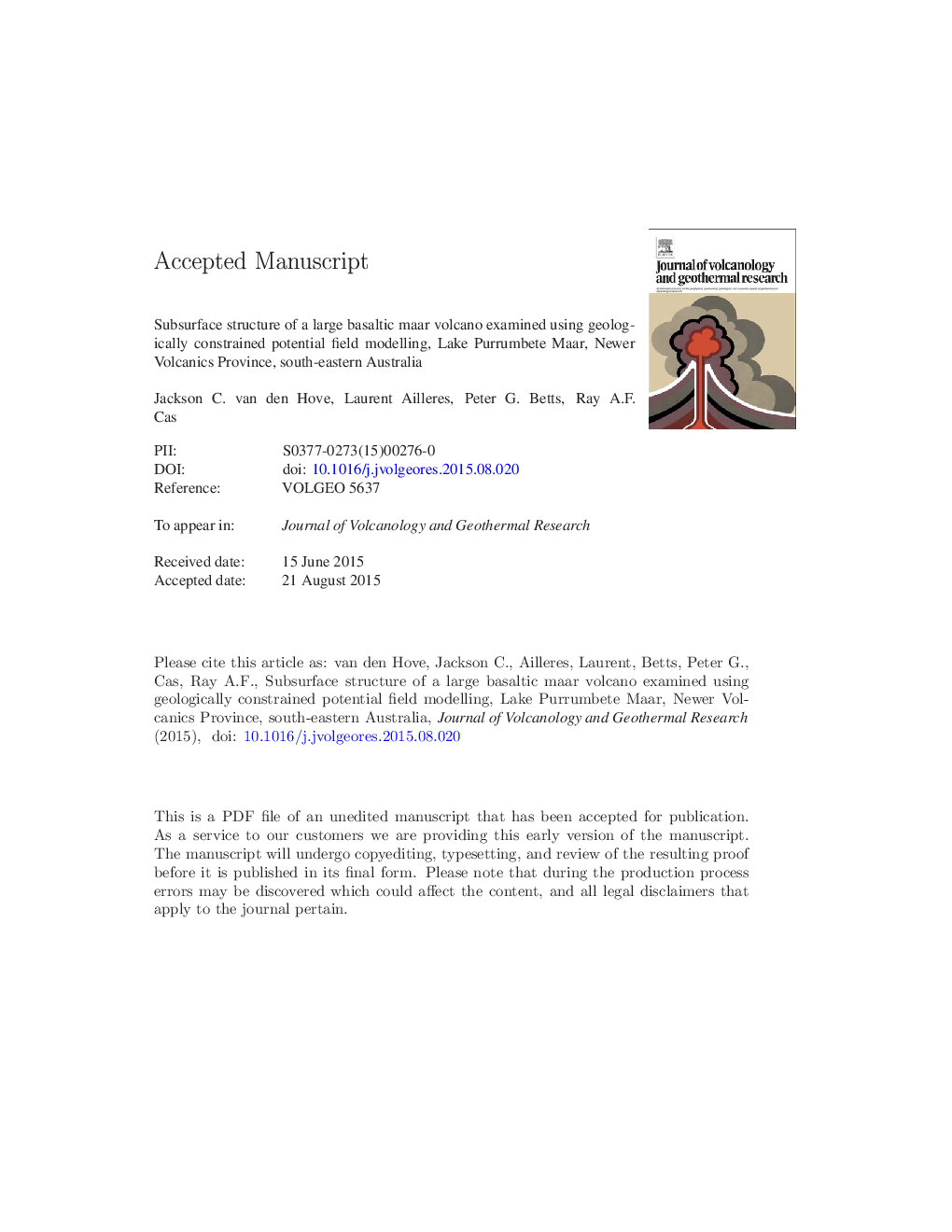| کد مقاله | کد نشریه | سال انتشار | مقاله انگلیسی | نسخه تمام متن |
|---|---|---|---|---|
| 6439793 | 1638318 | 2015 | 46 صفحه PDF | دانلود رایگان |
عنوان انگلیسی مقاله ISI
Subsurface structure of a large basaltic maar volcano examined using geologically constrained potential field modelling, Lake Purrumbete Maar, Newer Volcanics Province, southeastern Australia
دانلود مقاله + سفارش ترجمه
دانلود مقاله ISI انگلیسی
رایگان برای ایرانیان
کلمات کلیدی
موضوعات مرتبط
مهندسی و علوم پایه
علوم زمین و سیارات
ژئوشیمی و پترولوژی
پیش نمایش صفحه اول مقاله

چکیده انگلیسی
Lake Purrumbete Maar (LPM) is situated in the Late Cenozoic intraplate, basaltic Newer Volcanics Province, southeastern Australia. It is one of the largest maar volcanoes in the world with a near circular crater that is up to 2800Â m in diameter containing a 45Â m deep lake. Gellibrand Marl accidental lithics, which occurs to a maximum depth of 250Â m below LPM, represent the deepest excavated host rock unit present in the volcanic succession. Irregular clast shapes and peperitic textures observed in marl lithics suggest the host rock was poorly consolidated during the eruption. High-resolution lake- and land-based gravity and magnetic data were collected to conduct forward and inverse modelling of the subsurface architecture of the maar. This is done to test the assumption, based on lithics, that the diatreme is limited to 250Â m depth and identify the reasons behind LPM's large size. The collection of gravity data presented a unique challenge due to the nature of measuring small changes in gravitational forces (<Â 1Â mGal) associated with the maar, on an inherently unstable water body. The magnetic anomaly over LPM shows several irregularly shaped high magnetic anomalies. Four 2.5-D forward models transecting LPM were constructed based on the observed potential field data. Five coalesced vents forming an undulating shallow bowl-shaped diatreme contained within the Gellibrand Marl (240Â m depth) were modelled to satisfy the observed magnetic response, while a large sill body at 350Â m depth is modelled to satisfy the observed gravity response. A second forward model, completed to satisfy the observed magnetic response, also includes coalesced shallow bowl-shaped diatremes within the Gellibrand Maar, which then taper down to become thin and steep sided and extend down to the basement (1,050Â m depth). Three-dimensional property and geometry inversions suggest the diatreme most likely extends to a greater depth than the initial maximum depth of 240Â m. This suggests the lithic-based maximum diatreme depth inferred by accidental lithics present in the volcanic successions is an underestimate.
ناشر
Database: Elsevier - ScienceDirect (ساینس دایرکت)
Journal: Journal of Volcanology and Geothermal Research - Volume 304, 1 October 2015, Pages 142-159
Journal: Journal of Volcanology and Geothermal Research - Volume 304, 1 October 2015, Pages 142-159
نویسندگان
Jackson C. van den Hove, Laurent Ailleres, Peter G. Betts, Ray A.F. Cas,